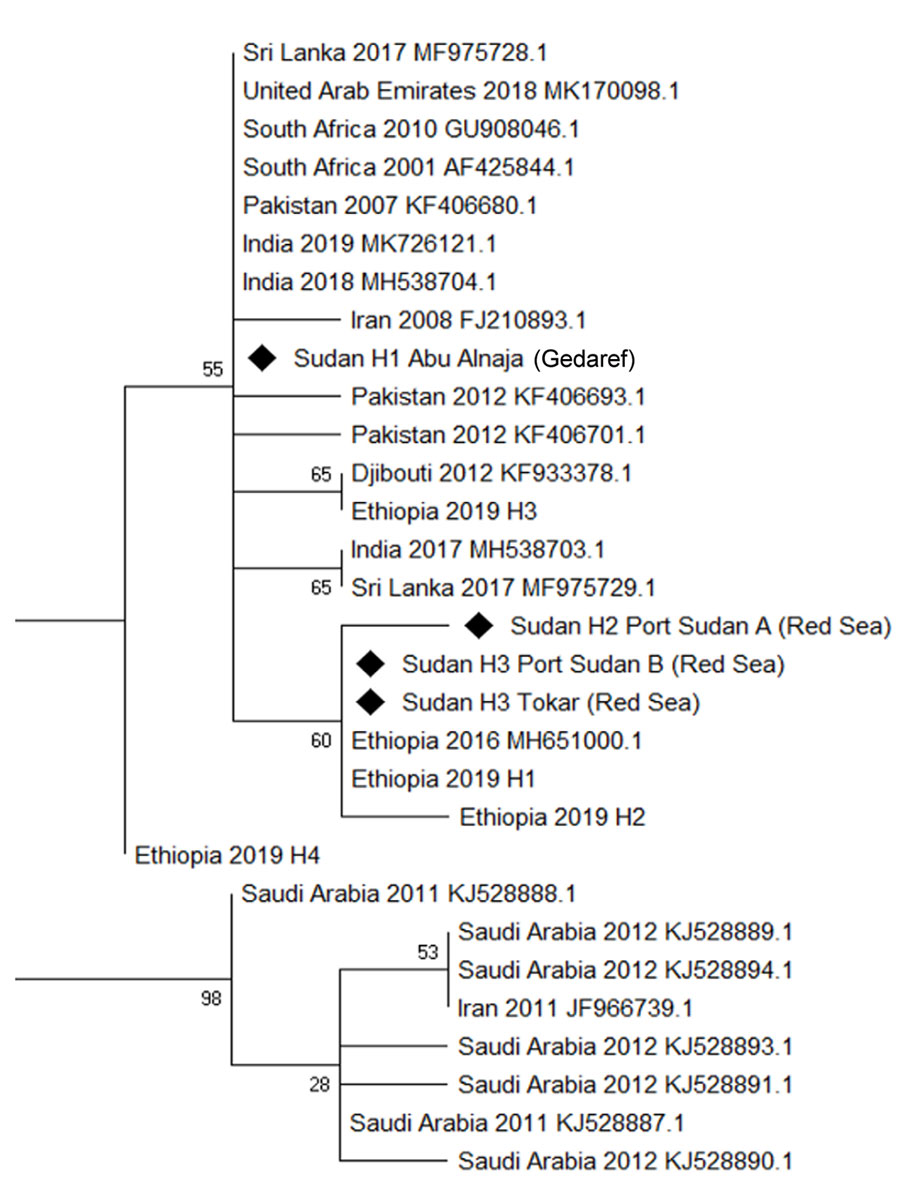Volume 27, Number 11—November 2021
Research Letter
Invasive Malaria Vector Anopheles stephensi Mosquitoes in Sudan, 2016–2018
Figure

Figure. Phylogenetic analysis of Anopheles stephensi mosquitoes collected in Sudan, 2016–2018, and reference sequences. Maximum-likelihood tree was constructed by using mitochondrial cytochrome oxidase 1 sequences from Sudan (diamonds) and other countries from which data are available. GenBank accession numbers are provided for reference sequences.
Page created: October 06, 2021
Page updated: October 19, 2021
Page reviewed: October 19, 2021
The conclusions, findings, and opinions expressed by authors contributing to this journal do not necessarily reflect the official position of the U.S. Department of Health and Human Services, the Public Health Service, the Centers for Disease Control and Prevention, or the authors' affiliated institutions. Use of trade names is for identification only and does not imply endorsement by any of the groups named above.